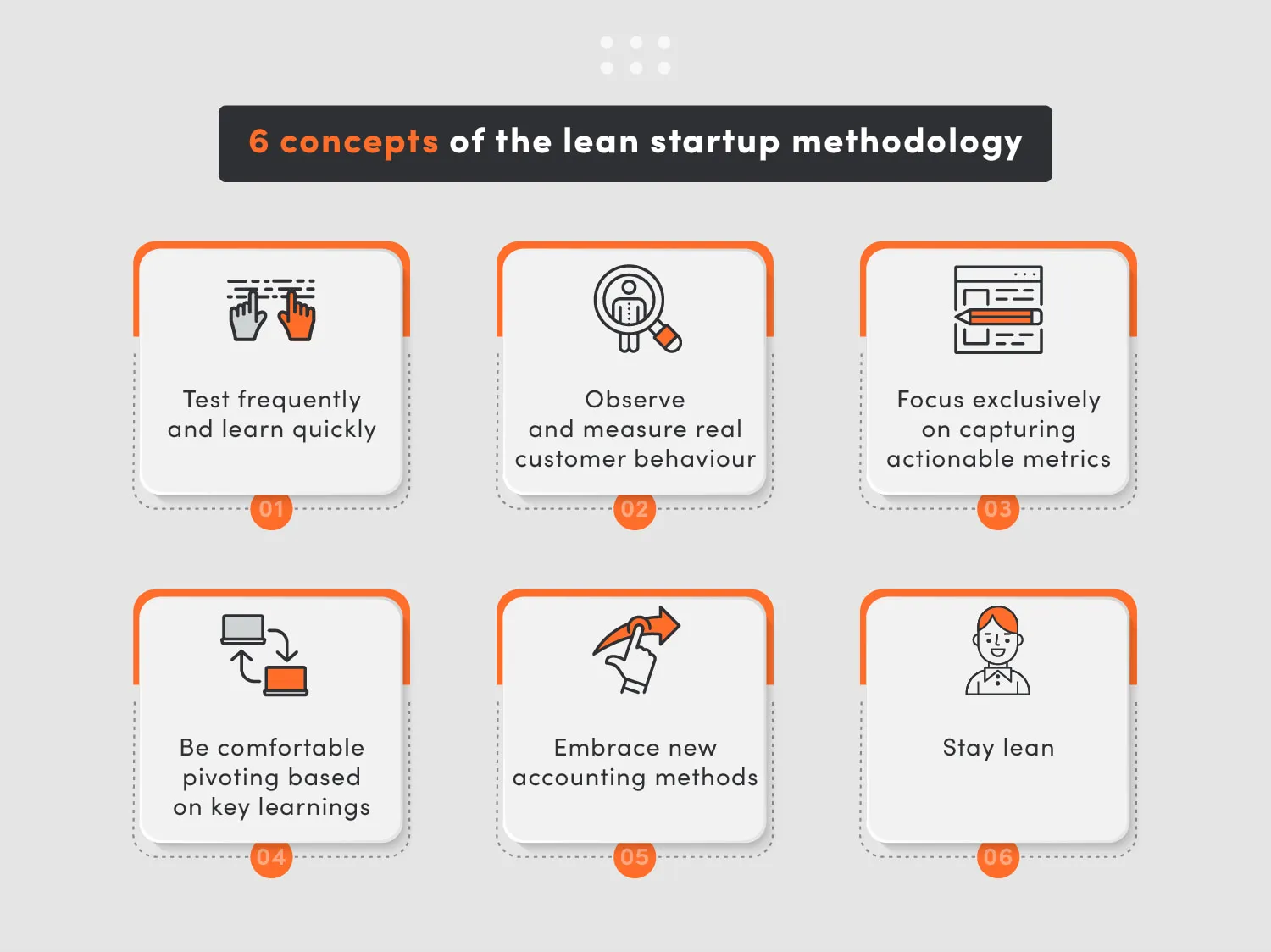If you’re involved in a startup in any way, shape or form and haven’t come across the lean startup methodology before, then you may well have been missing out. Started by Eric Ries back in 2008, this methodology has taken the tech startup world by storm, and now, some CEOs cannot live without it.
Any CEO out there who is looking for ways to aid the development process of their organisation could do worse than to look into this methodology. It could really add to the overall business plan of any company and see all kinds of benefits down the line. But what actually is it?
What is the Lean Startup Methodology?
The last 12 years have seen CEOs create radically successful business plans off the back of a seemingly very simple framework. This may seem too good to be true, but sometimes, as we all know, there is beauty in simplicity.
You might have come across the name Steve Blank before. This guy lived and breathed the lean startup approach and went on to an unfathomable level of success, partially as a result of this. He even went on to form the Lean Launchpad in 2011 - a method for successful entrepreneurship based around lean methodologies.
6 concepts of the lean startup methodology

The lean startup approach to business is formulated around the concept of a user-centered mindedness in the way that the development of products is approached, and it is devised of 6 key principles. If we can begin to practice those, we’ll be in the driving seat for a successful, lean project.
1. Test frequently and learn quickly: any good product or service is tested heavily, regardless of whether it uses lean methodologies in the process of developing it. We know this! But more frequent testing means faster learning, and that means a more efficient, more successful product. The minimum viable product is one of the most important stages of software development for lean manufacturing.
2. Observe and measure real customer behaviour: the other most essential feedback you’re going to need to receive through lean manufacturing is that of the customer. Customer feedback aids customer development, meaning that if you find out what the customer is looking for and what they think about certain things, you’ll be playing into their hands with your own product. We call this ‘validated learning’, and it looks great.
3. Focus exclusively on capturing actionable metrics: you might have come across the phrase ‘vanity metrics’. If not these, these are essentially metrics that are edited to make your product look better than it really is. This might feel good, but it will have a negative effect on the project overall. What you really want is realistic metrics that allow you to improve in certain areas.
4. Be comfortable pivoting based on key learnings: being flexible is fundamental to the concept of lean methodologies, and this runs deep. You might think you know everything there is to know about an area of development, but you should always be open to learning and taking on new information. It’s super important not to get stuck in your ways, especially in the business of technology!
5. Embrace new accounting methods: speaking of adapting, a great way to stay on top of things is to check out new methods of accounting. Observing user activity and engagement is, according to the methodology, a better scale of success than traditional accounting.
6. Stay lean: once you get into the rhythm of lean methodology, you’re going to want to stay there! Being fast and agile is a skill that takes a bit of time to master, so have some patience with being lean and you will see the results start to come through before you know it.
A lot of today’s entrepreneurs use continuous innovation to create radically interesting products with the concepts just detailed. This can have real long term benefits to a company, and it has the potential to better some older, more well-established methodologies. Let’s put it to the test against one of those.
Lean vs Agile startup methodologies
The words ‘lean’ and ‘agile’ might sound synonymous with one another, but they are actually reasonably differing methods for a business to adhere to. Of course, they both aim for customer satisfaction as the overall goal, but there are a few key differences that are worth noting.
Agile methodology holds its main principle as helping customers to build better overall products. Naturally, lean methodology looks for this too, but it does so in a way that is about improving the process around manufacture. In this sense, it tackles the quality earlier down the line, and that is one of the reasons that a lot of people actually prefer it to Agile.
The Principles of Lean Startup

We’ve taken a look at the six main concepts surrounding lean methodology, and now it's time to take a closer look at the actual principles within. There are a few key words to look at here, so let’s dive right into them:
- Minimum viable product: lean methodology revolves around continuous testing, and the first place to get a product into place for users to begin to test is the minimum viable product. It’s not necessarily about getting this right the first time, but it is about getting it done as soon as possible and distributed quickly.
- Continuous deployment (only for software development): after you have perfected the MVP, keep that testing going! You should always be making improvements while someone else is testing another area of the product so that there is a continuous cycle of testing and development.
- Split testing: otherwise known as A/B testing, split testing is a user research methodology that focuses on the conducting of randomised, controlled experiments on a product to ensure that it improves the metrics.
- Actionable metrics: and those metrics need to be actionable. What’s the point of any information if you can’t do anything about it?
- Pivot: this one is all about adaptability. As Steve Blank famously put it, “fire the executive, not the plan”.
- Innovation accounting: as we mentioned before, being able to measure the success of any project or a company as a whole through metrics outside of accounting is a fresh way to do things.
- Build-Measure-Learn: the final key principle here is a feedback loop that is a real game-changer. Let’s take a closer look at it.
Read also: 7 Agile Best Practices You Should Know
The Build-Measure-Learn feedback loop
Build-Measure-Learn as a concept might seem astonishingly simple, but an understanding of it can really improve the efficiency of a business. We’re about to take a look at each of the three stages of it:
- Build: stage 1 refers to the future product. Here, some of the planning takes place and the MVP is born. Get the product out there quickly and move on to the next step with the intention of pleasing the customer all the while.
- Measure: by measure, we’re mainly talking about customer feedback with a secondary focus on testing results. If you can receive customer feedback as quickly as possible, you will be in the driving seat to perfect your product.
- Learn: now, it’s about gathering all that data and finding out what it means. What have you done well that you can do even better? What needs work right off the back? The customers are the ones who will be best equipped to provide you with these answers!

Try our developers.
Free for 2 weeks.
No risk. Just results. Get a feel for our process, speed, and quality — work with our developers for a trial sprint and see why global companies choose Selleo.
Pros and Cons of Lean Startup
Now that we all have a clearer understanding of what lean startup methodology actually is, allow us to think about how it can actually benefit our own business. We imagine that this has been running through your mind throughout reading this article, but we’re going to point out some pros and cons that you might not have considered just yet.
Pros
- Time saving: because the product is getting out there more quickly and the development cycle itself is shorter, you’ll be able to get your product onto the market much faster than in some other models.
- Risk reduction: when the MVP comes in early, you’ve got something to fall back on. And with all that customer feedback constantly flowing round, it would be a shock if you did not deliver something that people will be able to fall in love with.
- Systematic approach: the goals of this model are defined clearly and put out in a way that is easy to follow throughout. This, combined with strong attention to metrics that are going to help you, could prove to be a foolproof model if executed in the right ways.
- Minimises waste: testing and feedback is streamlined here. You’ll be able to get away with spending less money later down the line, not only because the project is faster but also because there will be no need to put more money into further development at the end.
- A sustainable business model: a combination of all four of the previous benefits will have the result of sustainability for your business. This means that you will be able to be competitive in the long term, music to the ears of just about any CEO out there.
Cons
- Survive the dips: some critics have said that lean methodology runs away from the dips that could come back to haunt you later down the line.
- Customer feedback can’t always happen: we’ve all tried to reach out for feedback and not been able to acquire it from time to time, and this could have serious detrimental effects to the lean model.
- Burnout: the intense pace of lean could leave the business, or individuals, feeling burned out.
- Technology and architecture can go underappreciated: sometimes, intricacy can be skipped over due to the breakneck speed of lean modelling.
6 Perfect Examples of Lean Startup
Having read this article so far, you probably won’t be too surprised to hear that some of the biggest names in tech have used lean methodology on their own projects. Here are just a few of those names. If you weren’t feeling inspired before, there is a good chance you will be when you check out this list!

Dropbox
We love the story about Dropbox, as they actually based their whole company on lead methods when they were just a startup. Now, they are one of the biggest names in cloud storage with a huge annual turnover that improves year after year.

Zappos
This company began selling shoes online in 1999, and now they’re one of the biggest clothing retailers going. Founder Nick Swinmurn wanted to find out whether people would buy shoes online, and he did so with an MVP. Of course, the answer was yes, and the rest is history.

General Electric
GE developed their ‘Fastworks’ project based on lean building. They actually even bought in Ries himself as a consultant for the project! After training 5000 managers in lean principles, a new product was developed with maximum time saving and efficiency.

Toyota
The Japanese electronics and car manufacturers are very proud of their lean approach to manufacturing. This company uses MVPs all the time to do their best work, and their best work really is quite something.

Slack
Just like Dropbox, Slack has seen a rapid rise to the top. Now, it’s almost the industry standard in workspace communication. How did they get there? Lean methods are a big part of their success story. Their MVP was actually quite different, but through constant testing and feedback, it turned into the beast that it is today.

Pebble
Wearable tech is all the rage these days, but Pebble did not know it was going to be as successful as it is right now when they started out. Research and development were key to them finding out that their idea was going to work, and it was all run through lean frameworks.
Summary
Lean methodologies really can be a rollercoaster, but if you can get them right, the sky's the limit. But where do you start integrating it into your next project? As we mentioned before, it can be a little tricky to get the principles right on your first try, and that’s where outsourcing comes in.
Here at Selleo, we have plenty of experience in lean projects, and we would be more than happy to share that experience with you so that we can get you on the right track to a bright, lean future. With a helping hand in the first stages, you can really go a long way!
Reach out for a consultation with us today and see how we can help you nail your next lean project. You’ll be amazed at the results!





